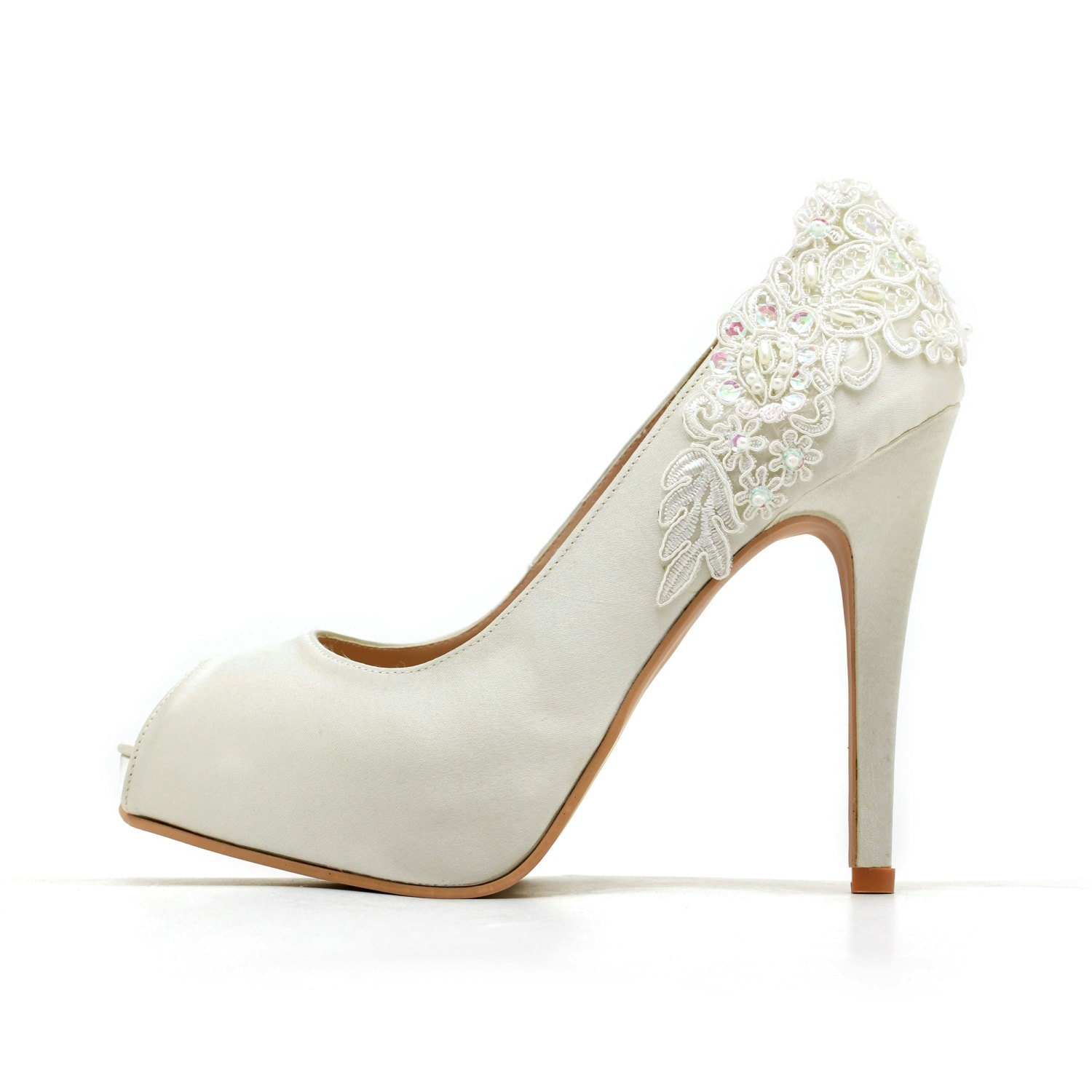Bridal Shoes Ivory Biography
Source:- (Google.com.pk)
Ceremonial padukas, or toe-knob sandals, is the name of India’s oldest, and ultimate footwear. They were little more than a sole with a post and knob, which was situated between the big toe and second toe. They were commonly made from silver, wood, iron or even ivory. There is even a Spiked Paduka used for masochism. Masochism is for obtaining gratification or sexual arousal by having pain inflicted upon oneself. Some masochists enjoy a form of aichmophilia (the love of needles and spikes). Once pain has been registered for 20-40 minutes, the body will begin to produce opiate-like chemicals to reduce pain sensation. The release of these chemicals causes anesthetic, euphoric and trancelike qualities that allegedly enhance sexual sensitivity or experience. Spiked padukas sandals are worn by Indian Hindu Sadhus, or Holy Men, for this very purpose.
Out of the Bethmale Valley, south of the city Saint Girons in the Ariege district, comes this high pointed bridal wooden shoe. They go back as far as the 9th century, when local villagers conquered a camp of Moorish invaders, who kidnapped the village women, and pricked the hearts of their enemy on the pointed tips of their clogs, in celebration of their victory. The clogs were made in one piece of the trunks of walnut trees which formed a rectangle with its roots. Later the branches of a tree were pulled and warped in a special way to pre-shape the tree for making this type of clogs. Village men created the clogs for their future brides. It is said that the higher the point, the greater his love for her.
The ballet boot is a contemporary style of footwear. They started as a fetish shoe, but have grown in popularity as a general fashion statement, particularly in Japan. This shoe merges the look of the traditional ballet slipper with the ultimate high heel. The illusion is to force the wearers feet almost en pointe, like those of a ballerina using an ultra long heel. The Ballet Boot originally gained popularity in the 1980′s, and is now available worldwide through specialty stores and online. You may have guessed, but these shoes are not intended to be worn for any extended period of time. The shoes (based on the images one finds on google images) seem to be rather popular with fetishists.
The Han Chinese tradition of binding women’s feet to make them appear as small as a lotus bud lasted well over a thousand years. Shoes from the north, especially Beijing, had a ‘bow’ shape, an exaggerated curved sole and heel in one piece, often with leather reinforcements at toe and heel. Style conscious women from Shanghai in the late 19th century and early 20th century, (then the fashion capital of China), liked a multiple heel, while those from the southern provinces such as Guangdong wore shoes often made of black cotton or silk, with a fairly flat heel. Iron or wooden studs were added in some cases to the soles to raise and protect the embroidered silk shoe from the dirt of the streets.As part of her dowry, a woman would make several pairs of shoes as proof of her needlework ability, as well as her small feet. After her wedding, a bride gave each of her main female in-laws a pair of shoes at a special ceremony known as “dividing the shoes.” The last shoe factory to stop mass production of lotus shoes was the Zhiqiang Shoe Factory. The factory added lotus shoes for old Chinese women who still had bound feet to it’s product range in 1991. In the first two years, more than 2,000 pairs of shoes were sold annually. It announced in 2009 that it will make the shoes only on a special-order basis.
Bridal Shoes Ivory Bridal Shoes Low Heel 2014 UK Wedges Flats Designer Photos Pics Images Wallpapers
Bridal Shoes Ivory Bridal Shoes Low Heel 2014 UK Wedges Flats Designer Photos Pics Images Wallpapers
Bridal Shoes Ivory Bridal Shoes Low Heel 2014 UK Wedges Flats Designer Photos Pics Images Wallpapers

Bridal Shoes Ivory Bridal Shoes Low Heel 2014 UK Wedges Flats Designer Photos Pics Images Wallpapers

No comments:
Post a Comment